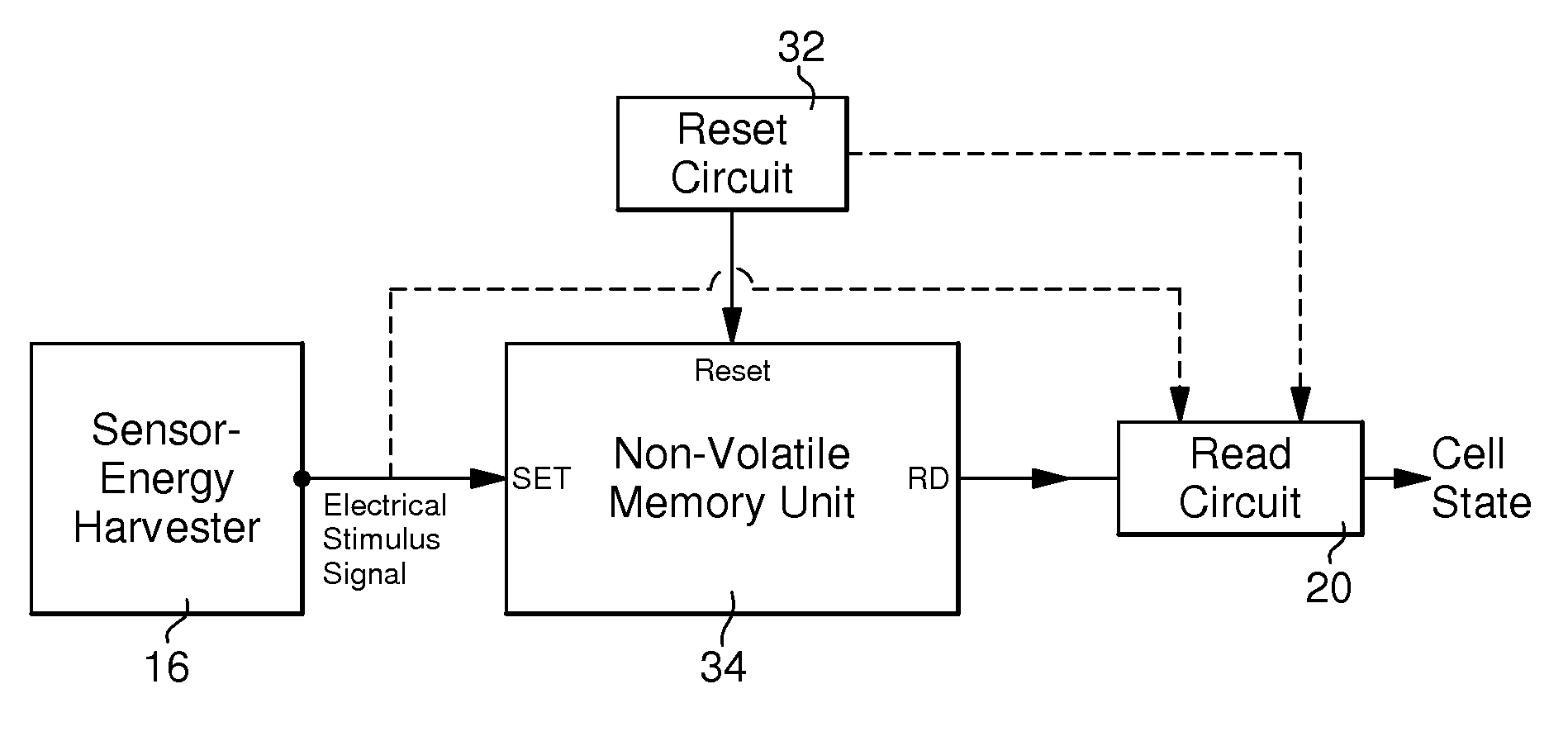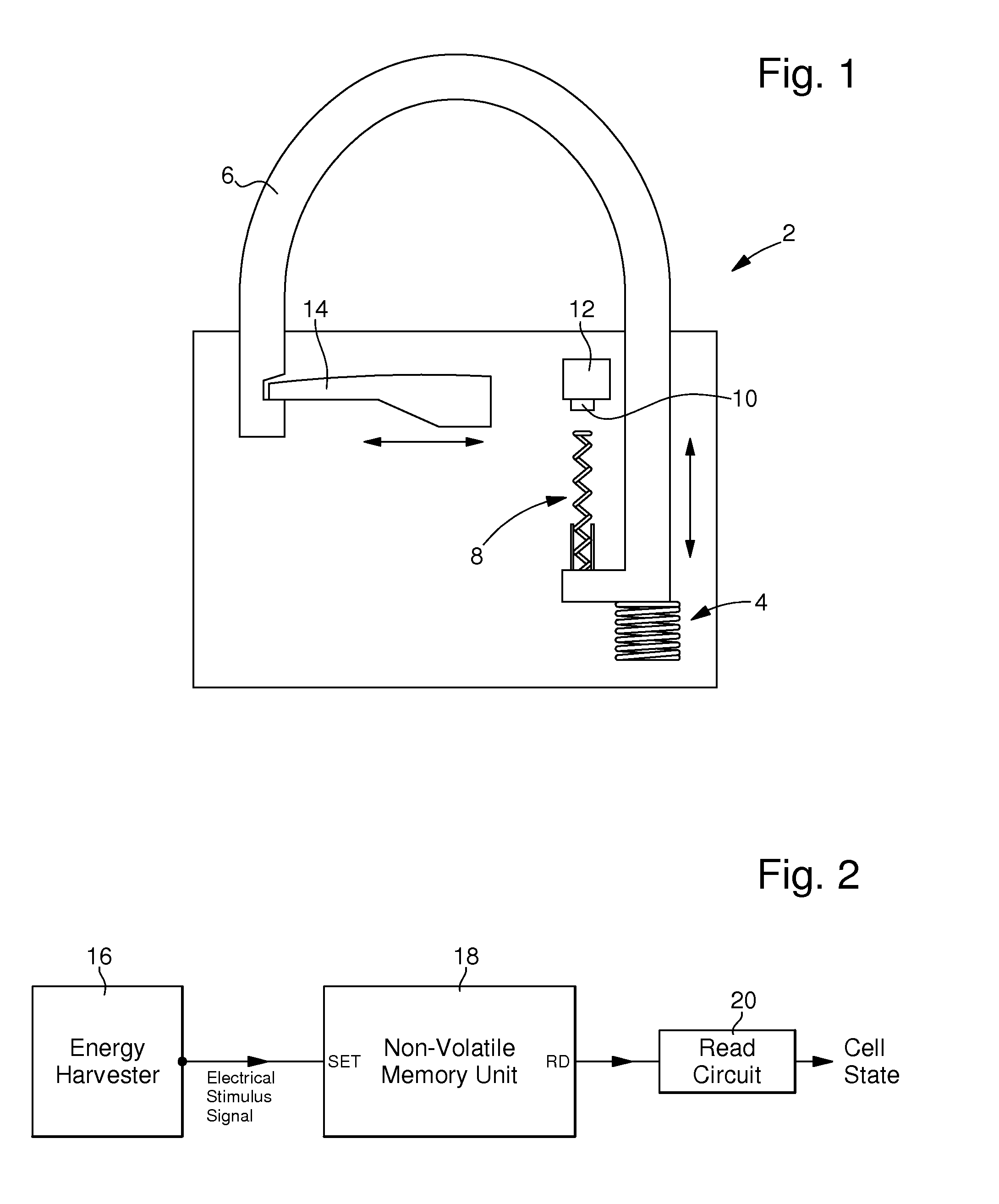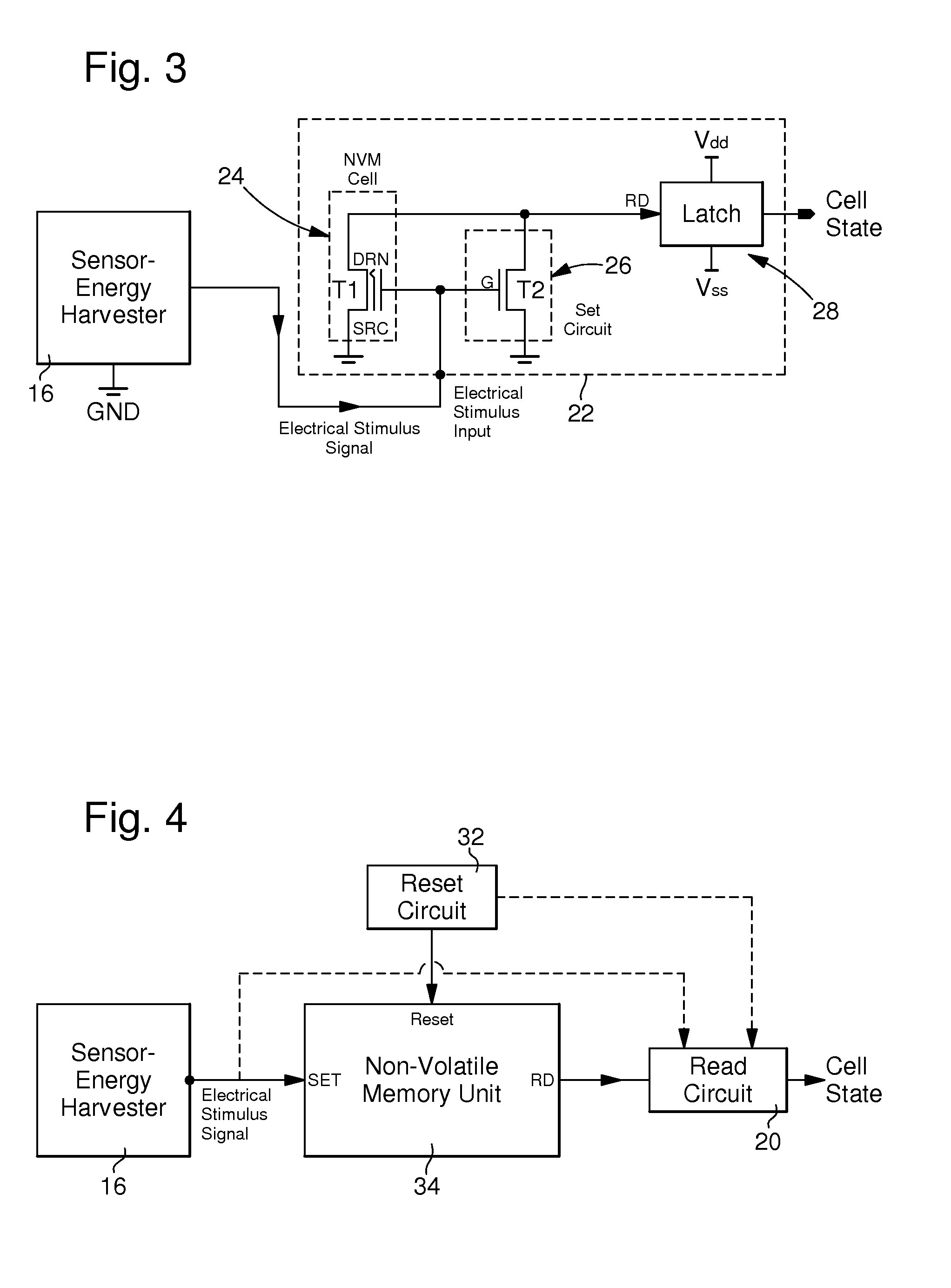Self-powered detection device with a non-volatile memory
a detection device and non-volatile memory technology, applied in the direction of generator/motor, alarm lock, automatic control, etc., can solve the problems of limited lifetime of the device, inability to detect and record an event, and inability to operate the device, so as to achieve efficient reading operation and efficient reset operation
- Summary
- Abstract
- Description
- Claims
- Application Information
AI Technical Summary
Benefits of technology
Problems solved by technology
Method used
Image
Examples
first embodiment
[0096]FIG. 9 shows such a NVM unit with a NVM cell 66 having only two terminals (2-terminal NVM Cell). In the detection mode, the voltage stimulus signal resulting from an electrical stimulus pulse generated by the sensor is applied through input SET to input A of the 2-terminal NVM Cell simultaneous with 0V (GND) on input SET * being applied to input B, as already explained. The subcircuit 68‘Isolation Crt A’ isolates SET * from output RD during a set operation (stimulus pulse applied in the detection mode) as well as during a reset operation (reset mode). To read the cell (read mode), SET is driven to 0V by Clamp B when no electrical stimulus pulse is present and thus the switch 60 (FIG. 6) is OFF, REN is driven high, and input IN is connected to output OUT to allow current to flow through subcircuit 68. To reset the cell, SET * is driven high while SET is at 0V. For the read mode and the reset mode, the switch circuit 58 is essential in order to disconnect SET * from GND / VSS.
[009...
second embodiment
[0105]FIG. 12 is a diagram of the NVM unit 52 of FIG. 6 with a NVFET cell 72, where the stimulus pulse is applied to the control gate G of the NVFET. This NVFET further comprises two diffusions defining two inputs 1 and 2. During the set operation (detection mode), the stimulus pulse is routed via input SET to the Gate G of the NVFET cell. At the same time, input SET * is driven low by switch 60 (FIG. 6), which in turn drives input 1 of the NVFET low. Subcircuit 68‘Isolation Crt A’ isolates SET * from RD except during a read operation (read mode). Electrons are stored in the charge storage material causing the threshold voltage of NVFET to be high and current low during a read operation.
[0106]During a reset operation (reset mode), SET * is driven high causing input 1 of NVFET 72 to be driven high. At the same time, SET is driven low by subcircuit 64‘Clamp B’ (FIGS. 7 & 8) driving input G low and thus the switch 60 (FIG. 6) is OFF. Electrons tunnel out of the charge storage material ...
third embodiment
[0107]FIG. 13 is a diagram of the NVM unit 52 of FIG. 6 with a NVFET cell 74, where a stimulus pulse is applied to one diffusion (Input 1) of the NVFET and where the read circuit senses, i.e. the read occurs, at the same diffusion. During the set operation (detection mode), the stimulus pulse is routed through the subcircuit 76‘Isolation Crt B’ to input 1 of NVFET 74. At the same time, SET * is driven low by transistor T2 (switch 60 of FIG. 6), which in turn drives input G of the NVFET low. Because REN is low or high impedance (not driving) and SET is high, isolation subcircuits 68(1) and 68(2) isolate IN from OUT. Both subcircuits 68(1) and 68(2) correspond to the subcircuit 68‘Isolation Crt A’ shown in FIG. 11. The isolation subcircuit 68(2) prevents any leakage current through NVFET 74 that may degrade the level of the stimulus pulse routed to the diffusion. The isolation subcircuit 68(1) isolates RD from input 1 of the NVFET also to prevent degradation of the stimulus pulse rout...
PUM
 Login to view more
Login to view more Abstract
Description
Claims
Application Information
 Login to view more
Login to view more - R&D Engineer
- R&D Manager
- IP Professional
- Industry Leading Data Capabilities
- Powerful AI technology
- Patent DNA Extraction
Browse by: Latest US Patents, China's latest patents, Technical Efficacy Thesaurus, Application Domain, Technology Topic.
© 2024 PatSnap. All rights reserved.Legal|Privacy policy|Modern Slavery Act Transparency Statement|Sitemap



